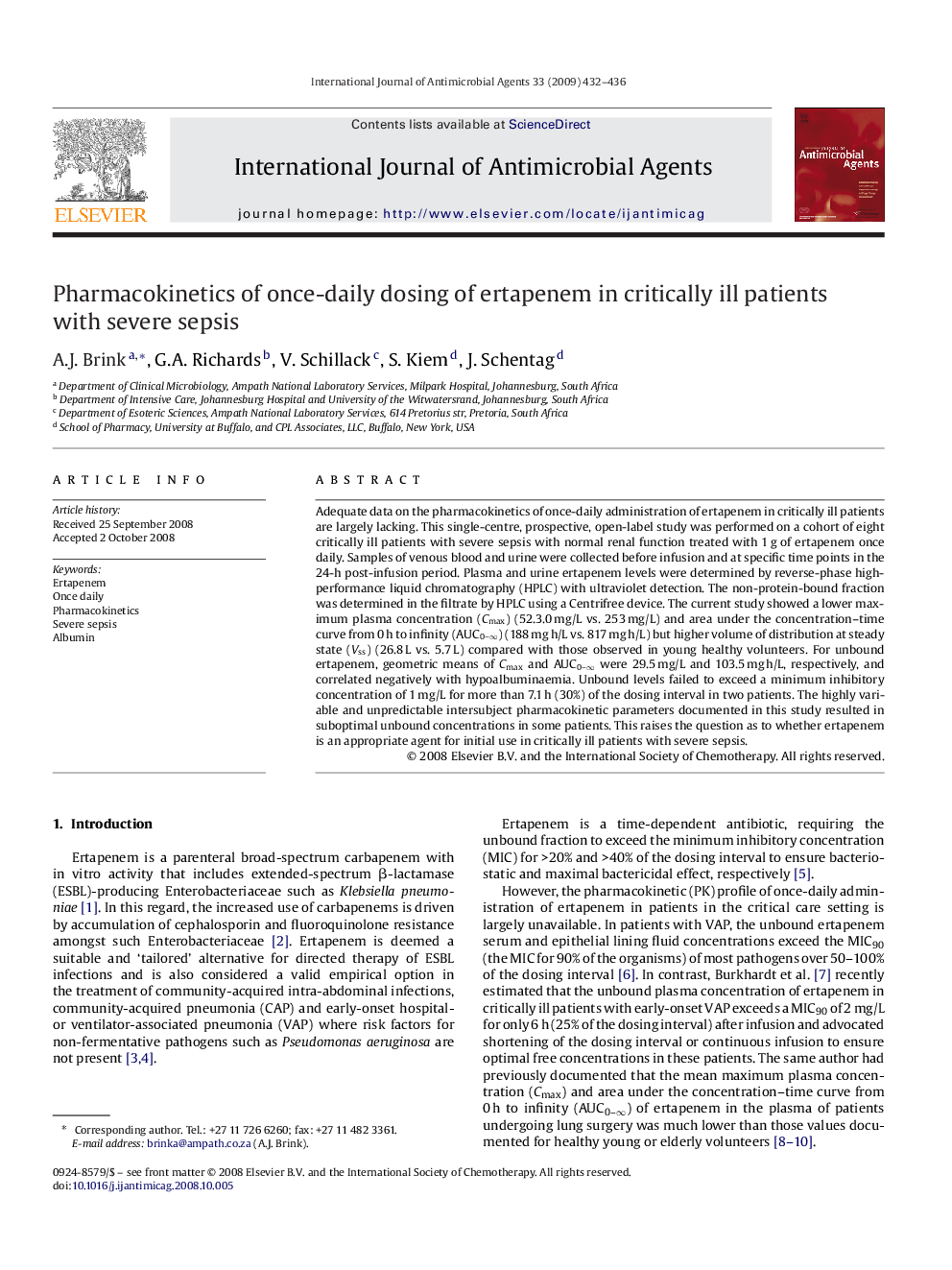| Article ID | Journal | Published Year | Pages | File Type |
|---|---|---|---|---|
| 6118520 | International Journal of Antimicrobial Agents | 2009 | 5 Pages |
Abstract
Adequate data on the pharmacokinetics of once-daily administration of ertapenem in critically ill patients are largely lacking. This single-centre, prospective, open-label study was performed on a cohort of eight critically ill patients with severe sepsis with normal renal function treated with 1 g of ertapenem once daily. Samples of venous blood and urine were collected before infusion and at specific time points in the 24-h post-infusion period. Plasma and urine ertapenem levels were determined by reverse-phase high-performance liquid chromatography (HPLC) with ultraviolet detection. The non-protein-bound fraction was determined in the filtrate by HPLC using a Centrifree device. The current study showed a lower maximum plasma concentration (Cmax) (52.3.0 mg/L vs. 253 mg/L) and area under the concentration-time curve from 0 h to infinity (AUC0-â) (188 mg h/L vs. 817 mg h/L) but higher volume of distribution at steady state (Vss) (26.8 L vs. 5.7 L) compared with those observed in young healthy volunteers. For unbound ertapenem, geometric means of Cmax and AUC0-â were 29.5 mg/L and 103.5 mg h/L, respectively, and correlated negatively with hypoalbuminaemia. Unbound levels failed to exceed a minimum inhibitory concentration of 1 mg/L for more than 7.1 h (30%) of the dosing interval in two patients. The highly variable and unpredictable intersubject pharmacokinetic parameters documented in this study resulted in suboptimal unbound concentrations in some patients. This raises the question as to whether ertapenem is an appropriate agent for initial use in critically ill patients with severe sepsis.
Related Topics
Life Sciences
Immunology and Microbiology
Applied Microbiology and Biotechnology
Authors
A.J. Brink, G.A. Richards, V. Schillack, S. Kiem, J. Schentag,
